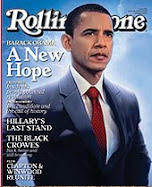Sunday, October 4, 2009
Ron Walters: Violence on the Domestic Front and the Obama Administration
Walters addresses the violence in Chicago and what it means for the Obama presidency. The analysis is nuanced in that he recognizes that we are in a transition from 30 years of Republicans ignoring the cities. Even so, the Chicago killing means that there is an urgency to improving the conditions which foment such behavior. Walters calls for the White House to step up its urban policy initiatives. To do otherwise will only condemn other young people to this out of control mob behavior that is such a blight on black communities all across the nation, including mid-sized cities like Saginaw, Flint, and Pontiac in Michgan and their counterparts aroound the nation. RGN
Chicago School Violence and the Urban Crisis
By Ron Walters
It was with some concern that when the 16 year-old student Derrion Albert was killed recently by other youth wielding wooden clubs in Chicago, the White House responded by deciding to send Attorney General Eric Holder and Schools Chief Arne Duncan into the fray. First of all, we should be pleased that this incident attracted action by the White House at all, but my concern is that at base it is really not an issue of policing or one of school administration, since 400 youths have been killed in Chicago in the past year.
The missing piece of this was the White House Office on Urban Affairs. In his latest book, More Than Just Race, Professor William Julius Wilson’ legendary research on Chicago poverty concludes that people behave the way they are socialized and structural racism has had a big role in developing the culture through which blacks view and engage the world. He means by structural racism, segregation – isolation - from other races through systematic patterns of housing placement and discrimination, the lack of productive work and its replacement by illicit activity, intractable poverty and the psychological reinforcement of negative status stereotypes, and other things. These things undercut positive parenting and shape the response of youth to events in their environment.
Where Wilson comes out then is where many behavioral scientist do; environment has a strong influence on behavior and most often, one institution, such as the school is not strong enough to change it. This points back to doing something about the urban environment which has a systemic impact on the behavior of youths and others. With a 50% unemployment rate in most big cities for youth 16-18 years old, most youths now days leave school not headed for jobs, so what about using the Stimulus money to create more jobs for them? With the home foreclosure rate bringing down the price of housing, why not make it more attractive for low-income families to get normal mortgages and get out of apartments? And with the Stimulus grants now emphasizing the greening of public housing and other facilities, why not begin robust job training programs for youths who live in these areas?
This has to do with Urban policy, but when I look at what the new White House Office is doing, it seems from the tour in which Director Adolfo Carrion has been engaged, the emphasis is on fostering regional economic growth or “sustainability.” That is fine in one sense, because it fits in with my emphasis on jobs, but I don’t see robust programs in the tour preparing low-income folks to participate in the new opportunities that have come on stream in cities like Kansas City, Mo; Portland Oregon; and Denver Colorado.
Well, on one hand I get it, Urban policy has been so maligned in the past 30 years by conservatives that it has been ignored because it was problem oriented and peoples of color were pegged as the reason for the problems as opposed to the conditions under which most were forced to live. The Obama Administration is attempting to change the image of cities by connecting them to metro areas and placing them in the role of the engines of growth for the country and for their impact on the global economy.
This fair enough, but I don’t see how it works with Blacks and Hispanics becoming a larger share of the population and constituting populations that experience many of the social problems that drove whites away from cities into the suburbs in the first place. And now that whites are coming back into many cities and Blacks are moving to the suburbs, the problems that were once considered strictly “Urban” are now part of the Metro areas. So, there still needs to be strong programs dealing with poverty elimination, job creation, excellent education in the public schools, and the like. All of the research I have seen suggests when this happens and the environment improves, violence will decrease. Without urgent action, the White House had better get ready for an increase in such violent incidents among youth in other cities as the unemployment rate for Blacks moves from 16% now to over 20% by next year.
So, I would hope that the White House does not make the Chicago situation a “drive-by” event but uses it as a paradigm for its new approach to urban-metro America.
Dr. Ron Walters is Professor of Government and Politics Emeritus at the University of Maryland College Park. His latest book is, The Price of Racial Reconciliation (University of Michigan Press).
Chicago School Violence and the Urban Crisis
By Ron Walters
It was with some concern that when the 16 year-old student Derrion Albert was killed recently by other youth wielding wooden clubs in Chicago, the White House responded by deciding to send Attorney General Eric Holder and Schools Chief Arne Duncan into the fray. First of all, we should be pleased that this incident attracted action by the White House at all, but my concern is that at base it is really not an issue of policing or one of school administration, since 400 youths have been killed in Chicago in the past year.
The missing piece of this was the White House Office on Urban Affairs. In his latest book, More Than Just Race, Professor William Julius Wilson’ legendary research on Chicago poverty concludes that people behave the way they are socialized and structural racism has had a big role in developing the culture through which blacks view and engage the world. He means by structural racism, segregation – isolation - from other races through systematic patterns of housing placement and discrimination, the lack of productive work and its replacement by illicit activity, intractable poverty and the psychological reinforcement of negative status stereotypes, and other things. These things undercut positive parenting and shape the response of youth to events in their environment.
Where Wilson comes out then is where many behavioral scientist do; environment has a strong influence on behavior and most often, one institution, such as the school is not strong enough to change it. This points back to doing something about the urban environment which has a systemic impact on the behavior of youths and others. With a 50% unemployment rate in most big cities for youth 16-18 years old, most youths now days leave school not headed for jobs, so what about using the Stimulus money to create more jobs for them? With the home foreclosure rate bringing down the price of housing, why not make it more attractive for low-income families to get normal mortgages and get out of apartments? And with the Stimulus grants now emphasizing the greening of public housing and other facilities, why not begin robust job training programs for youths who live in these areas?
This has to do with Urban policy, but when I look at what the new White House Office is doing, it seems from the tour in which Director Adolfo Carrion has been engaged, the emphasis is on fostering regional economic growth or “sustainability.” That is fine in one sense, because it fits in with my emphasis on jobs, but I don’t see robust programs in the tour preparing low-income folks to participate in the new opportunities that have come on stream in cities like Kansas City, Mo; Portland Oregon; and Denver Colorado.
Well, on one hand I get it, Urban policy has been so maligned in the past 30 years by conservatives that it has been ignored because it was problem oriented and peoples of color were pegged as the reason for the problems as opposed to the conditions under which most were forced to live. The Obama Administration is attempting to change the image of cities by connecting them to metro areas and placing them in the role of the engines of growth for the country and for their impact on the global economy.
This fair enough, but I don’t see how it works with Blacks and Hispanics becoming a larger share of the population and constituting populations that experience many of the social problems that drove whites away from cities into the suburbs in the first place. And now that whites are coming back into many cities and Blacks are moving to the suburbs, the problems that were once considered strictly “Urban” are now part of the Metro areas. So, there still needs to be strong programs dealing with poverty elimination, job creation, excellent education in the public schools, and the like. All of the research I have seen suggests when this happens and the environment improves, violence will decrease. Without urgent action, the White House had better get ready for an increase in such violent incidents among youth in other cities as the unemployment rate for Blacks moves from 16% now to over 20% by next year.
So, I would hope that the White House does not make the Chicago situation a “drive-by” event but uses it as a paradigm for its new approach to urban-metro America.
Dr. Ron Walters is Professor of Government and Politics Emeritus at the University of Maryland College Park. His latest book is, The Price of Racial Reconciliation (University of Michigan Press).
Subscribe to:
Post Comments (Atom)

























No comments:
Post a Comment